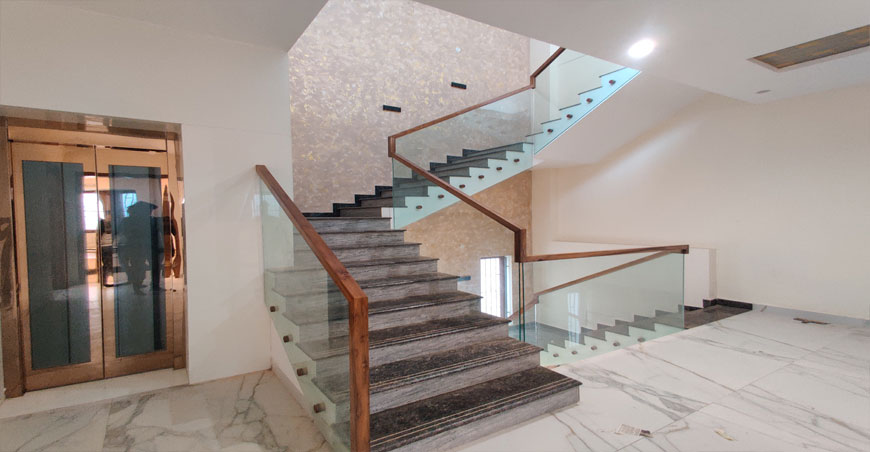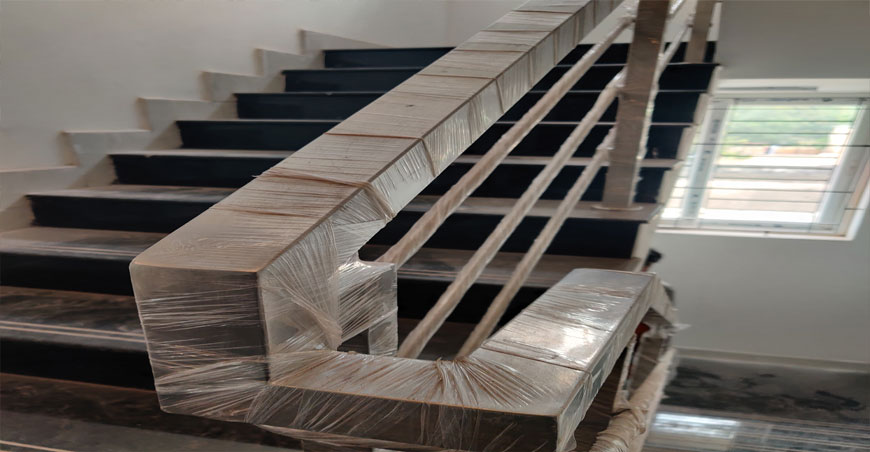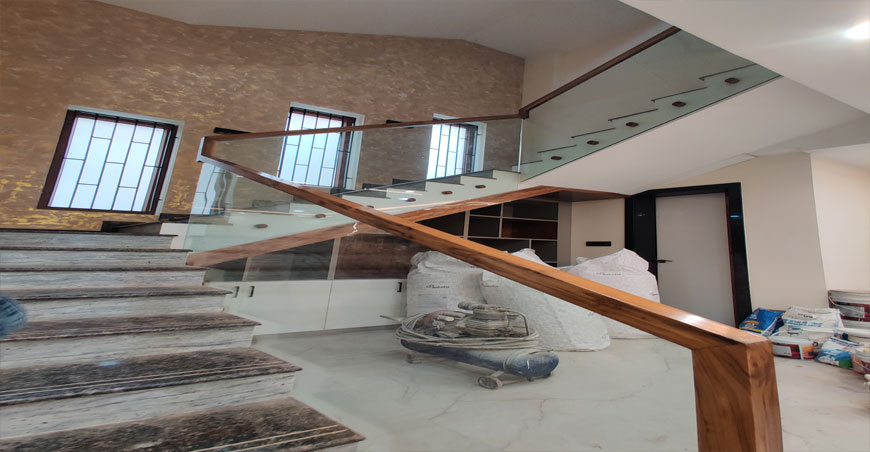In contemporary architecture, staircases are no longer mere functional elements that connect different levels of a building. They have evolved into powerful design statements that reflect the style and ethos of the space they inhabit. Among the various materials used in staircase construction, glass has emerged as a favorite for those seeking a blend of modernity, elegance, and a sense of openness. This essay explores the various aspects of glass staircases, including their aesthetic appeal, structural integrity, design versatility, and the unique qualities they bring to both residential and commercial spaces.
Glass staircases are synonymous with modern elegance. Their sleek, transparent surfaces create an immediate visual impact, making them a focal point in any space. The transparency of glass allows light to pass through, contributing to a sense of openness and fluidity that is particularly desirable in contemporary design. Unlike traditional materials like wood or metal, which can visually dominate a space, glass staircases appear light and airy, enhancing the overall spatial experience.
The minimalist aesthetic of glass staircases aligns with modern architectural trends that favor clean lines, open spaces, and a reduction of visual clutter. By eliminating the solid mass typically associated with staircases, glass creates a seamless connection between different levels of a building, blurring the boundaries between interior and exterior, or between different rooms within a space.
One of the common misconceptions about glass staircases is that they are fragile or unsafe. However, advances in glass manufacturing technology have made it possible to produce glass that is both strong and durable. Tempered glass, which is commonly used in staircase construction, is several times stronger than regular glass and is designed to shatter into small, blunt pieces if broken, reducing the risk of injury.
Laminated glass, another popular choice, consists of multiple layers of glass bonded together with a plastic interlayer. This structure not only enhances the strength and safety of the glass but also provides additional sound insulation and UV protection. The use of laminated glass ensures that even if one layer is compromised, the staircase remains intact, further enhancing its safety features.
Glass staircases are engineered to meet rigorous building codes and safety standards. The glass treads, balustrades, and railings are often supported by stainless steel or other strong materials, ensuring the structural integrity of the staircase. With proper design and installation, glass staircases can safely support significant loads, making them suitable for both residential and commercial applications.
The versatility of glass as a material allows for a wide range of design possibilities. Glass staircases can be customized to fit various architectural styles, from ultra-modern to more traditional settings. They can be straight, spiral, or cantilevered, and can be combined with other materials such as wood, metal, or stone to create a unique, personalized look.
Frosted or etched glass can add privacy or artistic elements to the staircase, while colored glass can introduce a bold visual statement. The ability to manipulate glass in so many ways gives architects and designers the freedom to experiment with forms and aesthetics that might not be possible with other materials.
In addition to their aesthetic and functional qualities, glass staircases can also be enhanced with lighting elements. LED lights can be integrated into the treads or railings, creating a stunning effect, especially in low-light conditions. This not only adds to the visual appeal of the staircase but also enhances safety by improving visibility.
Glass staircases are increasingly popular in both residential and commercial spaces. In homes, they are often used to create a sense of luxury and sophistication. The transparency of the glass allows for unobstructed views, making them ideal for homes with scenic surroundings or open floor plans. A glass staircase can make a small space feel larger and more open, while also allowing natural light to flow freely between levels.
In commercial settings, glass staircases are often used in showrooms, offices, and high-end retail spaces to convey a sense of modernity and innovation. They serve as a visual statement, reflecting the cutting-edge nature of the business and creating a memorable impression on visitors and clients. The use of glass in these environments also reinforces the idea of transparency and openness, values that are increasingly important in contemporary business practices.
While glass staircases offer numerous benefits, there are also challenges and considerations that need to be addressed. One of the main concerns is maintenance, as glass surfaces can show fingerprints, dust, and smudges more readily than other materials. Regular cleaning is necessary to keep the glass looking pristine.
The glass staircase is a true embodiment of modern design principles, combining elegance, transparency, and innovation. Its ability to transform a space, create a sense of openness, and serve as a striking architectural feature makes it a popular choice in both residential and commercial settings. While there are challenges associated with the use of glass, the benefits far outweigh the drawbacks, making the glass staircase a symbol of contemporary sophistication and style. As architectural trends continue to evolve, the glass staircase will likely remain a favored option for those seeking to make a bold, yet refined, design statement.





